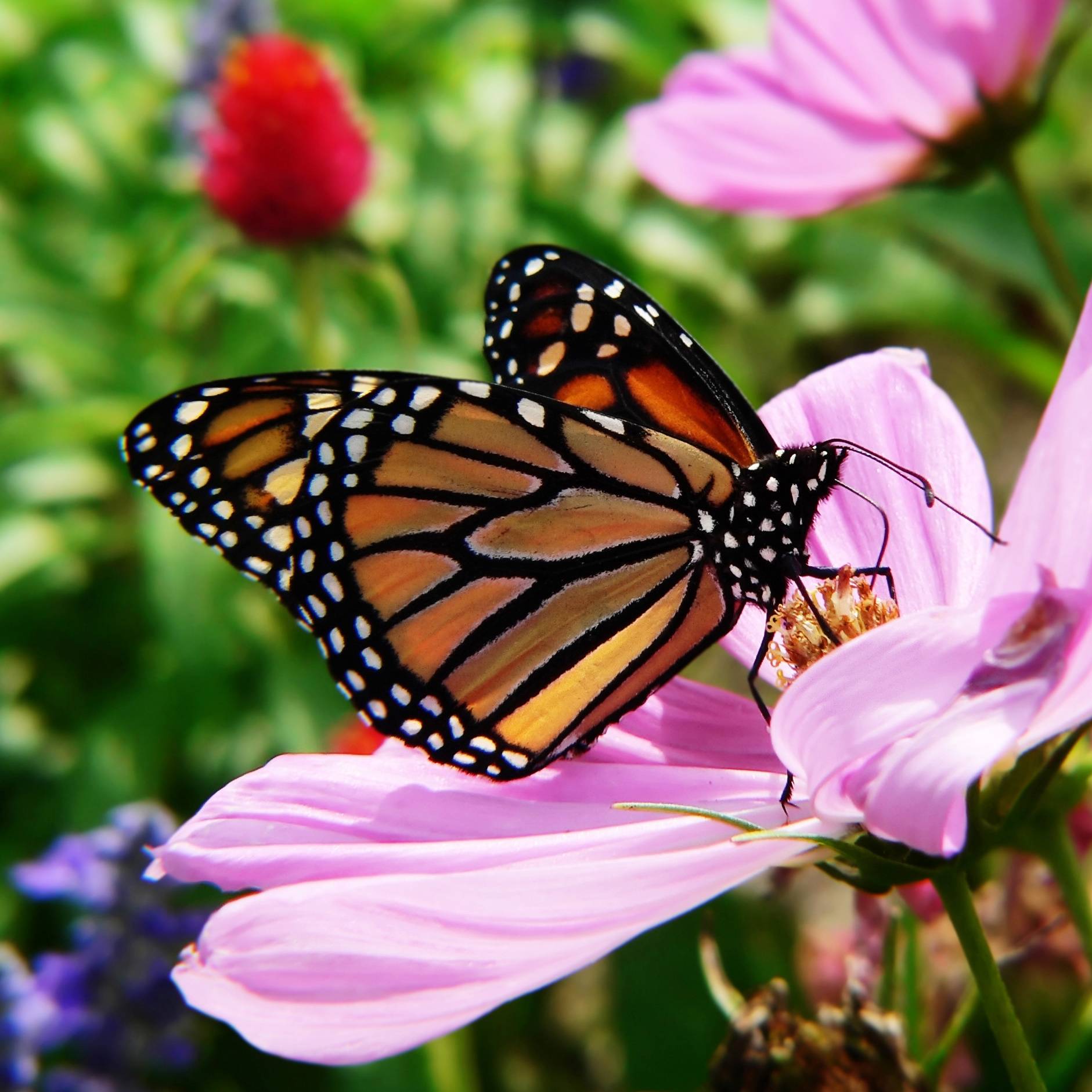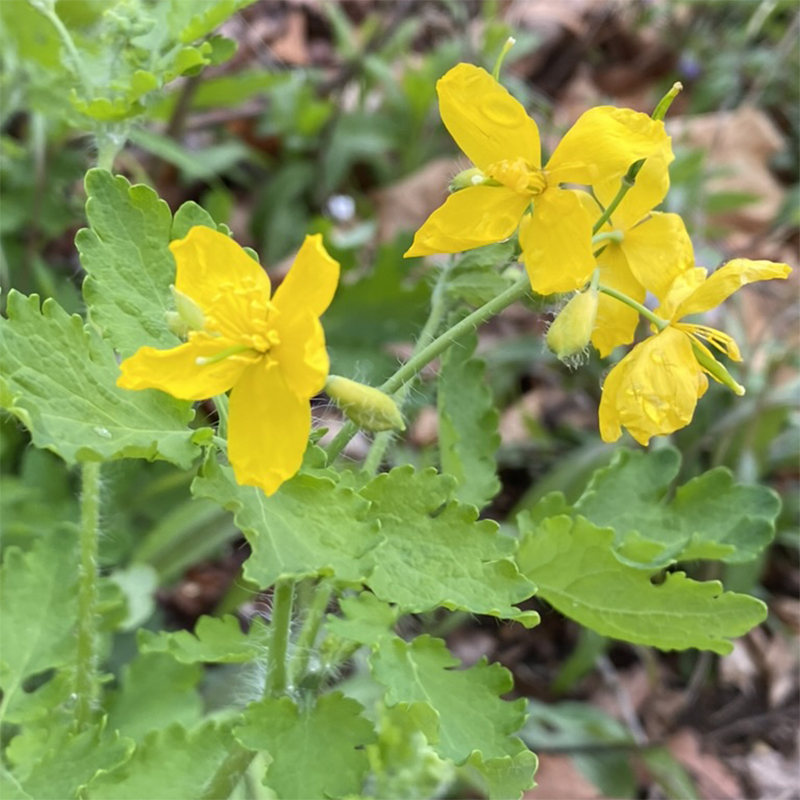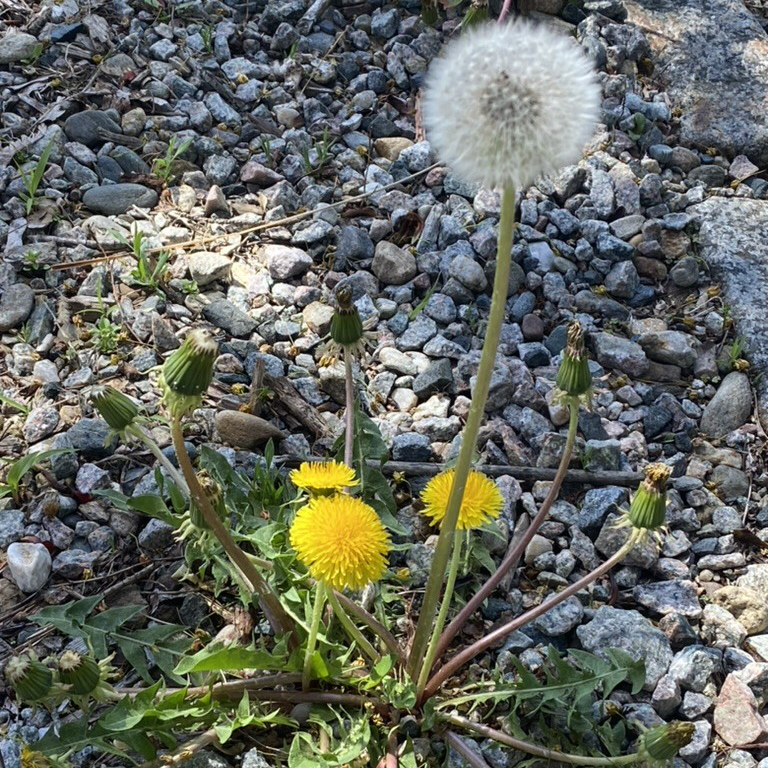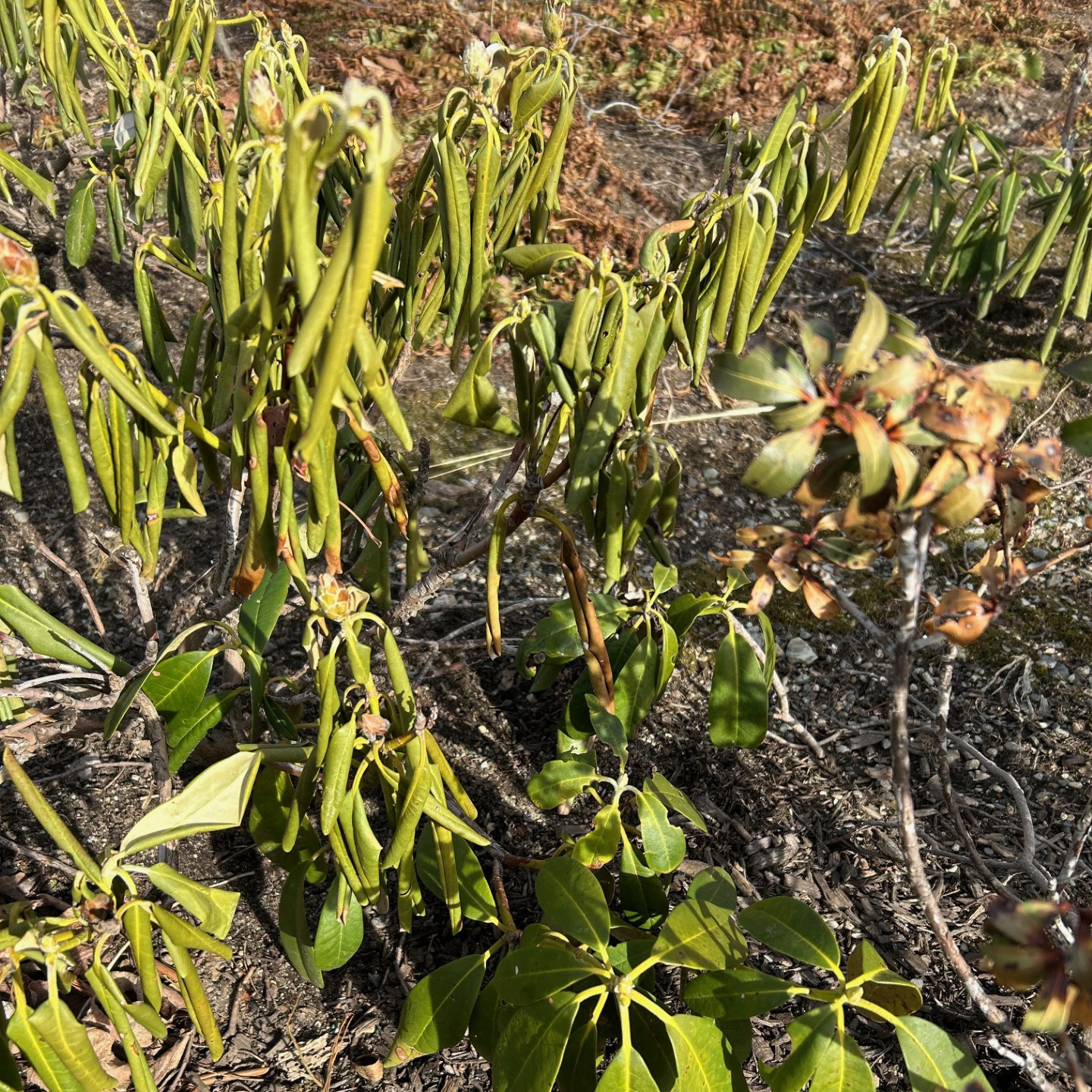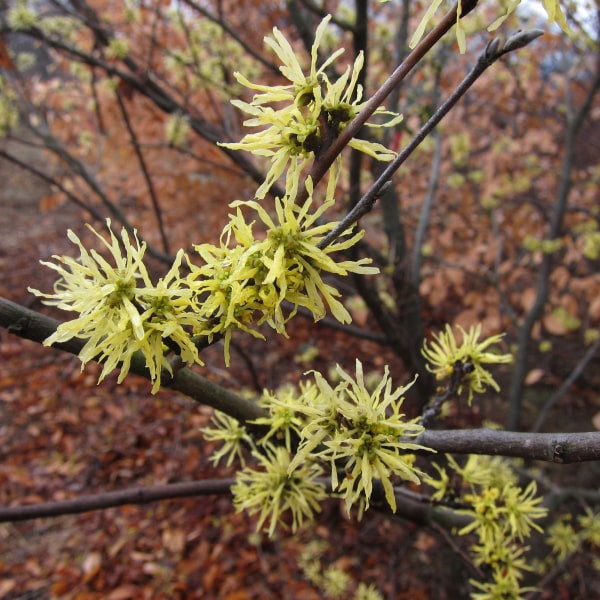
By R. Wayne Mezitt
Witch-hazel is our earliest garden shrub to bloom every year. Winter’s freezing temperatures keep Hamamelis flowers tightly-held in knobby dormant buds, satisfying an obligatory period of cold before blooming can commence. But around mid-February, warmed by sun and above-freezing temperatures, each spidery ¾”-wide fragrant flower petal unfurls (just like a New-Years-Eve-party noise-maker), only to re-furl once again when temperatures drop. This furl-unfurl process continues repeatedly for up to six weeks—often into April–as temperatures fluctuate between freeze and thaw; I know no hardy woody plant that has a longer bloom period!
Easy to grow, pest free and deer resistant, witch-hazels are winter-hardy to Zone 6, enjoying rich, acid soils, flowering most heavily in full sun but also growing well at the edge of the woods. Plants typically reach about 15 feet high and wide at maturity, so give them plenty of room to grow. The visual effect of grouping together differently colored cultivars is impressive, particularly against a dark background of evergreens, a dark-colored wall or the sky.
For a spectacular cut-flower display, combine similar-size branches of different-colored types in a sunny window vase. Their puffy, quarter-size blooms hold for about a week indoors, adding a welcome fragrance to temper your family’s mid-winter doldrums and impressing guests. Some cultivars tend to retain their autumn leaves—simply clip-off the dry brown leaves to better expose the flowers.
Most cultivars of the early-flowering hybrid witch-hazel (Hamamelis x intermedia) are the result of a marriage between the Japanese and Chinese species, H. japonica and H. mollis, exploiting the most appealing features of each species. Cultivars bloom profusely, even when young, in shades of yellow, orange and red, and their exceptional blooms delight the viewer up close or at a distance.
For those who appreciate how remarkable horticulture can be, the genus Hamamelis uniquely monopolizes New England’s shoulder seasons: it offers flower color well-before (and significantly-after[1]) the blooms of any other hardy flowering shrub. It’s disappointing to us that so few homeowners have added these inspirational plants to their gardens; perhaps it’s because when most people visit garden centers, their blooms have long faded.
An increasingly-wide selection of witch-hazel is now being offered on the market; ask at our garden center about the types available now, or check our online Availability List.
[1] Witch-hazel’s native sister Hamamelis virginiana is a common woodland sight in November and into December, just as winter’s cold begins to set in.


